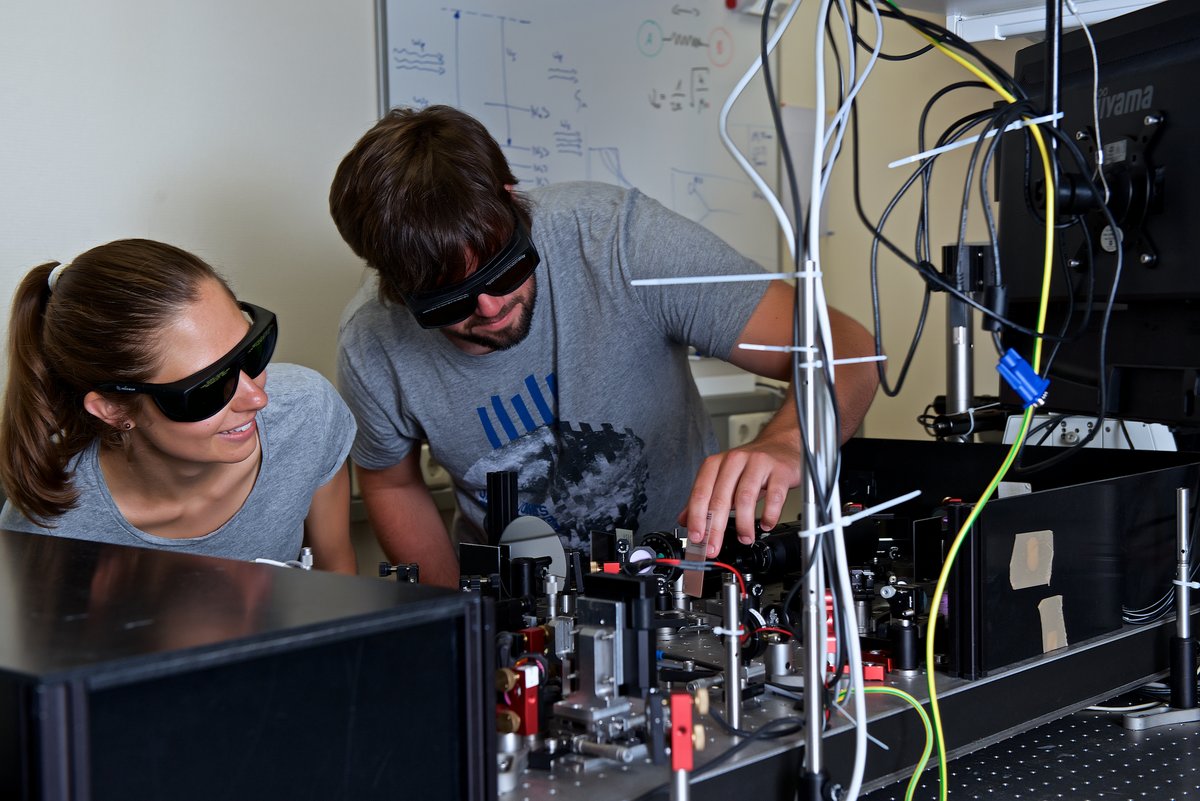We want to understand the dynamic processes in tiny systems. The development of more sensitive and selective methods for optical microscopy set the stage for us in this.
Spectroscopy in a Tiny Space
The Zumbusch Group is irrevocably wedded to four capital letters: CARS – the abbreviation for Coherent anti-Stokes Raman Scattering microscopy. This spectroscopic microscopic procedure opens the door to a highly sensitive and selective analysis of molecules, with a high spatial resolution. Samples do not need to be marked in CARS microscopy, since the procedure exploits the resonances of molecular vibrations to generate contrasts. This procedure, which is now widely used, was largely developed by Prof. Andreas Zumbusch and his team.
But although it is the best known invention produced by the Zumbusch team, it represents only one aspect of their research. “Our aim is to understand more fully the dynamic processes in the tiniest possible structures,” Andreas Zumbusch explains. “To this purpose, we develop and apply new methods for optical microscopy, particularly by using ultra-short laser pulses.” Another main focus of research in the team is on the dynamics of organelles, colloids and the reciprocal effects of proteins in biological cells.
The microscopy techniques developed by the Zumbusch team also have great potential for applications in medicine. Research is currently underway to see how CARS microscopy can support operations, to distinguish benign from malignant tumor tissue without the need for a biopsy.

